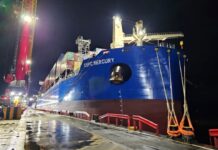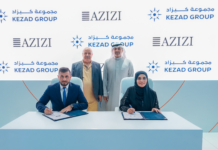
The International North-South Transport Corridor (INSTC) and the East-West Transport Corridor serve as critical components of the Eurasian transport network, linking major economic regions across continents through a multimodal (ship-rail-road) network.
As these two projects constitute a serious topic during BRICS summits, Container News managed to assess the operational performance by measuring metrics of key regional ports.

INSTC Corridor is designed to enhance trade links between Russia, Iran, India, and other countries along the route. The connectivity volatility data indicates a trend toward stabilization in connectivity fluctuations.
This suggests that operational improvements or increased familiarity and utilization of the corridor might be smoothing out earlier disruptions or inconsistencies in port operations and logistics. The gradual increase in volatility initially could have been due to adapting to new logistics dynamics or geopolitical influences impacting the corridor.
On the other hand, East-West Transport Corridor connects Russian ports to the borders of China, Mongolia, North Korea, and Kazakhstan. This corridor shows a higher and increasing volatility, which may reflect the complexities of navigating the diverse geopolitical and logistical environments across its route.
The higher volatility could be attributed to several factors, including variable rail and road conditions, differing administrative and customs procedures, or infrastructural challenges.
However, the slight decline in volatility towards Q3 2024 might indicate initial challenges being gradually addressed through infrastructure upgrades or better coordination among corridor countries.
Both corridors’ effectiveness is crucial for shortening transit times and reducing transportation costs compared to traditional routes like the Suez Canal.

While the INSTC shows signs of becoming a more reliable transport option, the East-West corridor, despite higher volatility, is critical for tapping into the vast Eurasian hinterland, offering strategic advantages for cargo movement between Europe and Asia.
Overall, the analysis of these corridors should continue to focus on identifying and mitigating factors contributing to connectivity volatility, enhancing infrastructure, harmonizing operations, and improving geopolitical cooperation to maximize their potential in transforming Eurasian trade dynamics.





